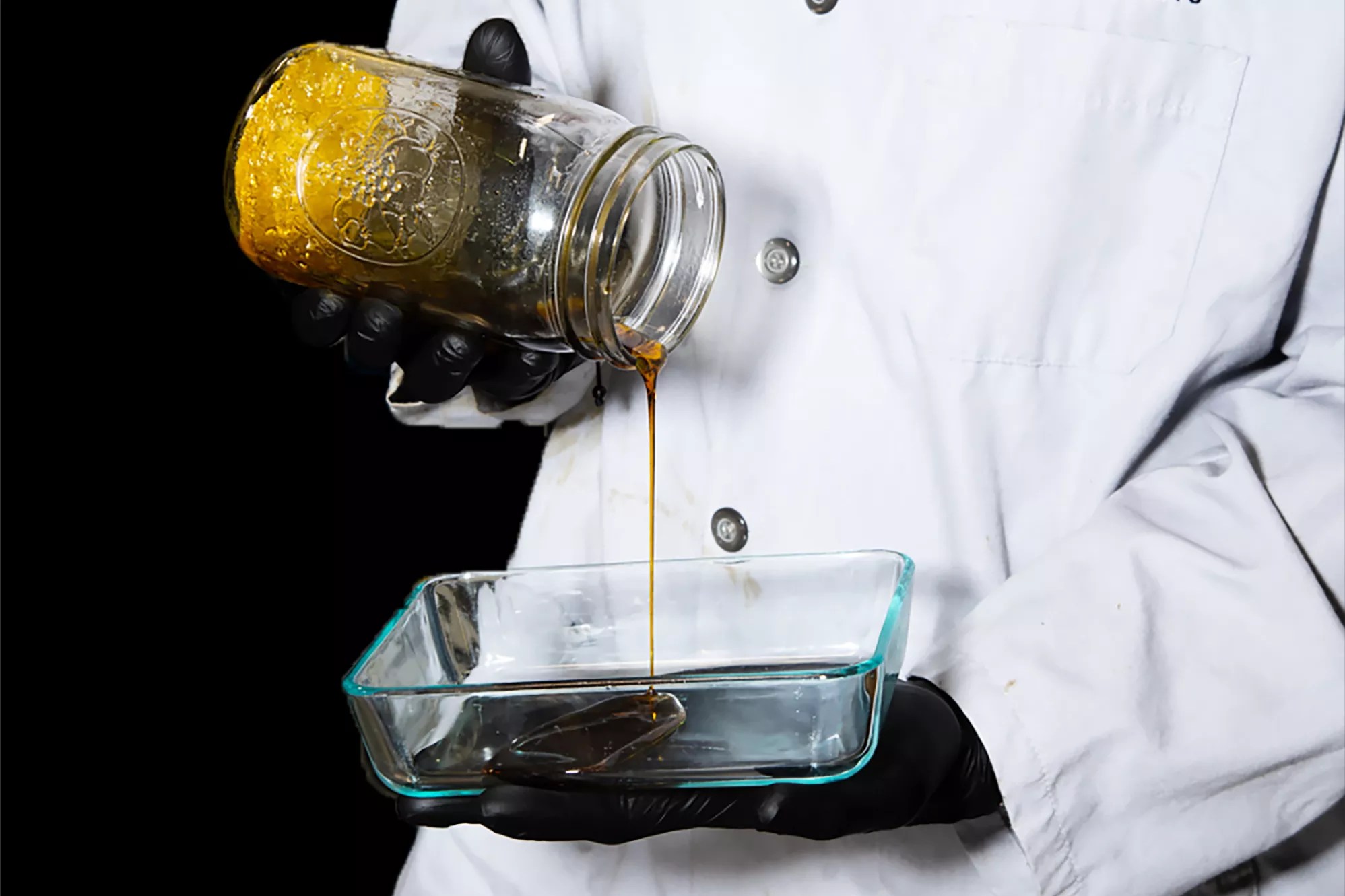
O’Hara Shipe

Audio By Carbonatix
From deli flower to concentrates and edibles, there is no shortage of ways to consume cannabis. But, if you want a potent, well-rounded high, it’s time to look into live resin and rosin.
While there are some nuanced differences between live resin and rosin, both products are full-spectrum extracts, which means they are packed with cannabinoids and terpenes. The larger the percentage of naturally occurring cannabinoids and terpenes in a product, the more a consumer will feel the unique effects of the strain they are ingesting.
Because potency is the name of the game when it comes to live rosin and resin, the base strains used typically are heavy-hitting purple strains, such as Granddaddy Purple.
Live resin and rosin also are derived from the same raw material – fresh, uncured flower – and are considered connoisseur-level products. But that’s where the similarities end and the differences begin.
Live resin purportedly was created by William “Kind Bill” Fenger and Jason “Giddy Up” Emo in 2013. The duo began experimenting with extraction techniques that could harness the potent terpenes and cannabinoids of fresh flower in 2010. Although the first attempts were mostly successful, the process was difficult and sometimes downright dangerous. That is, until technology caught up with Fenger and Emo.
Nowadays, live resin is produced through a chemical process that strips flash-frozen flower of its desirable chemical components, using a hydrocarbon solvent such as butane, propane or ethanol. The solvent is then evaporated, and the remaining material is pressed, leaving the finished product: a sticky mix of terpenes and cannabinoids with a strong flavor and color.
Because live resin is flash frozen, the curing and drying steps that cannabis plants typically undergo prior to consumption are cut out. The expedited timeline means that not only is live resin faster to produce, but it’s also cheaper.
Live resin has gained mass appeal among seasoned tokers, and this popularity has led manufacturers to scale up production, making live resin widely available and a cheaper option for those looking for a stronger product.
However, there are still some consumers who find the chemical process used in live resin production to be a turnoff. Luckily, there is another just as potent but perhaps more naturally derived way to consume cannabis: live rosin.
Unlike live resin, live rosin is produced in two simple steps: the application of heat and pressure.
Freshly harvested flower is pressed and heated to release the plant’s natural high-inducing compounds. The resulting product is a concentrated mix of terpenes and cannabinoids that can be turned into anything from edibles to cartridges.
The process itself is more labor-intensive and therefore more expensive, so live rosin often is produced in small artisanal batches. Live rosin fans cite the robust, nuanced flavor profiles and resulting intense highs as an experience worth the price.
If you want to dive into the waters of live resin or live rosin, the Valley has some great options to try. Flav has an entire line of live resin cartridges and edibles to suit every palate. Drip Oils, Canamo, Timeless, Copperstate and Lost Farm all produce high-quality live rosin products.